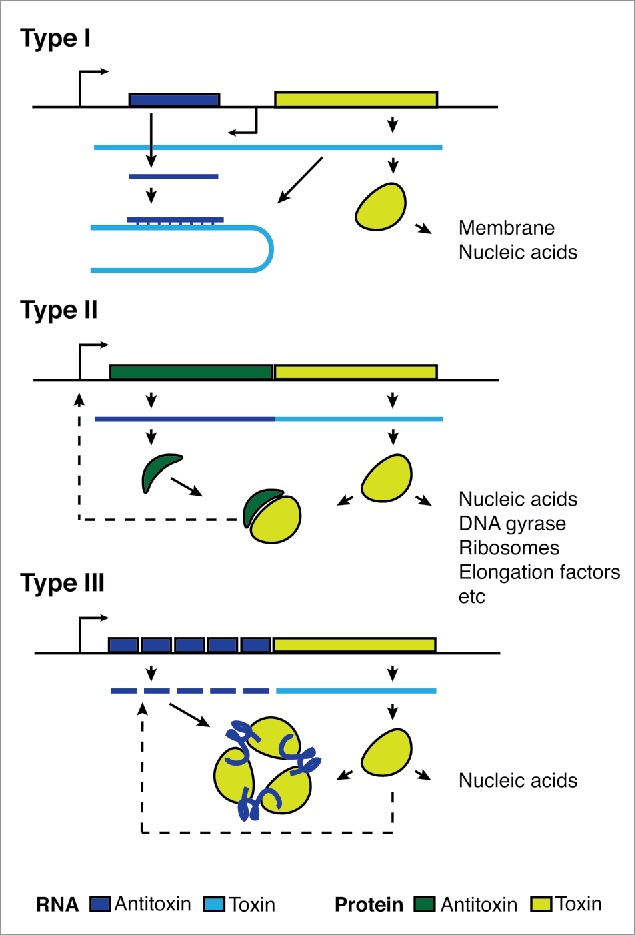Figure 1.

Operon organization and regulation of type I, type II and type III TA systems. Type I TA systems have an antisense RNA antitoxin that binds the toxin mRNA, leading to mRNA degradation. If the antitoxin does not bind, the toxin is translated and is free to target cellular membranes or nucleic acids.9 Type II TA systems have a protein antitoxin that directly binds the protein toxin, preventing the toxin from targeting various components of central dogma reactions. The bound toxin and antitoxin interact with their own promoter to control transcription in a process known as conditional cooperativity10 Type III TA antitoxins are RNA repeats. The cognate toxin is a nuclease that specifically cuts its own RNA repeats before the repeats directly bind and inhibit the toxin.17 All systems rely on careful titration of toxin and antitoxin in the cell. The antitoxin degrades faster in the cell, and a reduction of transcription and translation rates due to cellular stress or gene loss can free the toxin causing cell death or growth arrest.
